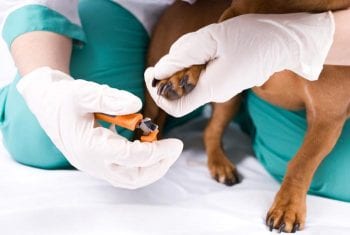Not long ago I was shadowing vets on placement, but now I’m on the other side of the fence – the one being shadowed.
As a student, I found EMS placements variable – some were great, and some… not so much. This often depended on the individual vet, some of whom would be naturally better and more enthusiastic about teaching, whereas some never seemed to have enough time for you; as if they found students little more than an annoyance.
While I realise teaching students is not for everyone (and there is no obligation to do so), I’ve always felt we all have to start somewhere, so it’s only fitting to give that back once qualified – as such, I aim to try to help students out as much as possible.
Questions and answers
Only now do I realise just how much I learned while on EMS placements, most of which I can attribute to a handful of great vets who took the time to teach and encourage me. There’s only so much university can teach, so it’s important for students to get as much out of EMS as they can.
As a vet, I chat to students to test their knowledge or gauge their level of experience of particular clinical skills – as and when they come up – related to a case I’m approaching. The conversation often goes from there with no real structure.
I remember being asked certain questions by particular vets – which were seemingly their “student questions” – ready to fire at them in a dull moment.
The little things

In terms of clinical skills, there are certain things many vets will encourage students to do: take blood, vaccinate a horse, place a catheter, scrub in on castrations and so on. Beyond that, I often struggle to think of things it would be good to get students involved in.
We often also overlook the “simple” things like pilling cats, applying spot-ons, drawing up injections, clipping nails – all of which are things all vets are expected to be competent in, and some students may not have experience of.
Anaesthetised patients also offer a wealth of learning opportunities – be that learning how to monitor anaesthesia, take pulses from different places, or give IM or SC injections without having the pressure of the owner watching.
Student resources
Many vets are great teachers and enjoy imparting knowledge on the next generation of vets, but I think they sometimes lack the ability to aim their questions or expectations at the right level.
Thankfully, the Association of Veterinary Students (AVS) has created a number of resources to be used by vets and students alike, with the aim of providing a bit more direction for both during EMS placements. The documents are freely available at www.avsukireland.co.uk/resources and include a resource for small animal, equine and farm practice.
There’s a page for the student to write some aims for the placement (and his or her preferred hot beverage), with the idea that this is put on a noticeboard, easily seen by everyone. There’s also a list of clinical skills for the student or vet to grade the student’s competence of. There are different lists for the expected clinical skills for students of different stages, with the final-year skills modelled on day one skills.
Conversation starter
I have only just discovered these resources and think they are a brilliant way to start a conversation about the type of things we can get students involved in. Additionally, they give students clearer aims for what to get out of placements and mark their progression as they move through vet school.
I was lucky enough to spend time at some amazing practices as a student and learned buckets from them. I just hope that, now I’m one of the vets teaching vet students, I can try to give them as much help as I was given on my placements – and, perhaps more importantly, that I’m friendly and approachable enough so students feel they can ask me anything without having to worry.

Leave a Reply